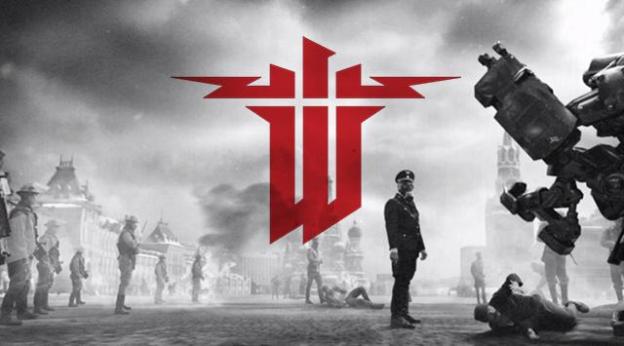
It’s hard to comprehend the impact an event will have the moment it happens. Enormous-feeling discoveries and decisions may be forgotten within a week, while seemingly inconsequential conversations can result in sleepless nights years later, haunted by the prospect of a sentence unsaid, or an offer accepted. Knowing the impact on oneself is difficult; understanding what it meant to another is near-impossible. Sometimes, it’s only while picking up the pieces of a shattered life that the gravity of a single decision can be understood.
Christ, what a depressing way to begin a blog. Let’s try again.
Wolfenstein: The New Order is a game where you can shoot dual-wield shotguns and shoot a swastika-branded robot dog with them. It’s a game in which a fictional branch of Judaism called “Da’at Yichud” makes power armor and laser beams and giant anti-gravity cannonballs. It’s a game in which the main character delivers the line “I’m coming for you, you Nazi fucking spaceman.”
Despite all this, however, it’s a game that drips with pathos. Its premise, that Nazis took over the world and now it’s time to take it back, is unbelievably campy. So much so, in fact, that the emotion in the game, the empathy and sadness and pain that seep through its narrative, is shockingly effective. The game promises a first-person murder simulator, and then ambushes the player with truly exceptional writing and character work. Despite the fact the protagonist, BJ Blazkowicz, is a 6’3, 250 pound mountain of a man, he carries with him the weariness of a soldier in an endless war. He spends a lot more time looking like the guy on the right than the guy on the left.
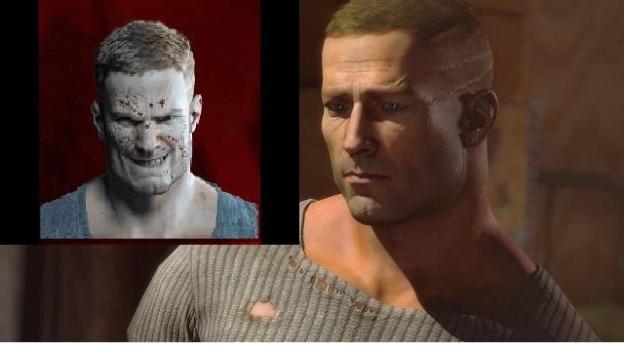
One reason he has those sad, sad, sensitive eyes is the truly horrific nature of the game’s one major choice. Early on, Blazkowicz and his two men are captured by the major villain of the story, the subtly-named General Deathshead. Holding Blazkowicz down in a room filled with partially-dissected cadavers, Deathshead tells him to make a decision: who should be subjected to the horrors of Nazi experimentation, and who simply gets to die.
It’s a nightmare. It’s one of the worst situations you could put a human in. However, at the risk of sounding grossly desensitized, it’s not that out of the ordinary for video games. Telltale’s The Walking Dead has several situations in which you make life-or-death decisions for characters, as does Bastion, Bioshock, and Metal Gear Solid 5. Death is just an emotional shortcut in many games; “that scene must have been important, because someone died.” Initially, Wolfenstein’s version of this trope doesn’t even seem particularly well thought-out. Neither of these characters have had more than five minutes of screen time since the beginning of the game. The player hasn’t had time to remember their names, let alone make a meaningful connection with either. What makes Blazkowicz’s choice special is it takes hours in the game, decades in-game, to understand what an irreversible toll it took on him and the world.
Because the man who wasn’t dissected survives, of course. I made Deathshead dissect the young, idealistic American kid named Wyatt on my team. There wasn’t a lot of thought behind it- the other guy, named Fergus, was Scottish and bristly and had a better sense of humor. The scene cuts away while Wyatt is tortured and killed. In the ensuing chaos, our hero, the invincible BJ Blazkowicz, is knocked into a coma. 20 years later, he wakes up to find that Nazis not only won the war, but control the globe. Fergus is somehow alive in prison in Berlin; he’s 20 years older, filled with hate and self-loathing at the fact that he survived and Wyatt didn’t.
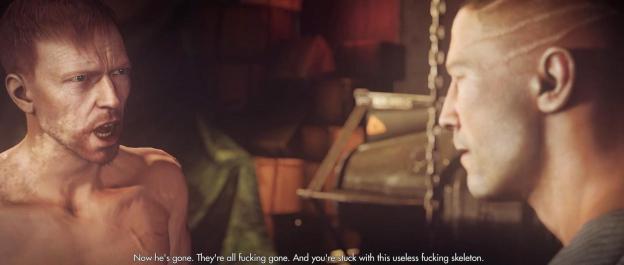
Fergus is a at first a tortured character, wracked with guilt in a world he feels somewhat responsible for creating. His character arc is an optimistic one, however. Despite everything, he keeps fighting. And when the last-ditch missions keep somehow paying off, he allows himself to feel joy in the act of resistance. He makes peace with himself. Though he, like everyone surviving in the horrors of post-war life, is irrevocably scarred, things for Fergus seem like they might just be okay.
Surprisingly it’s our hero, BJ “God of Nazi-Killing Incarnate” Blazkowicz who ends up being the story’s true tragic figure. Blazkowicz holds trauma close to his chest, only giving hints at the toll that a lifetime of war has taken on him. In a standout (and combat-free) level, he dives deep underwater and swims into the heart of the Nazi war machine. In combat’s stead, the game gives a window into his psyche:
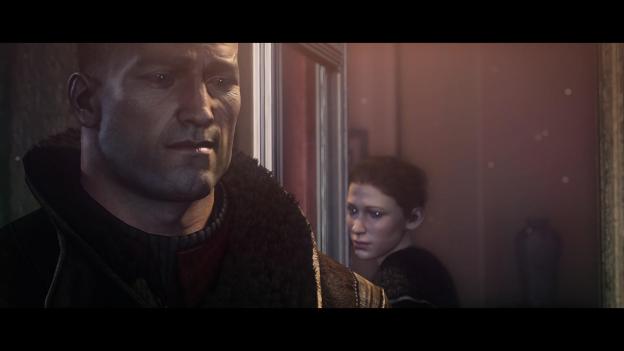
“When I was a kid, the Red Tide was rising. Went into the water on account for disobeying my father. Felt like my skin was on fire…like my skin was on fire”
He swims through the tunnels of the Nazi complex, much more alone than any other time in the game. Without the killing, the violence, Blazkowicz seems lost. Recounting memories of his childhood, glimpses of repressed trauma starts to bubble to the surface
“Thirteen years old, fell in the pond by the stables. Came up covered in leeches. Filthy, greasy leeches.”
His memories from before the war are scary and bleak. Blazkowicz’s wartime experiences have changed his present, but they also twisted and distorted his past. Nothing can escape the influence of the mental anguish he’s experienced.
“Age 11. Swam across forney lake on a bet over tin soldiers. But it wasn’t as dark as this”
The game doesn’t reveal the full depth of his pain until its final minutes. Earlier, after being forced to choose between his two men, the game cuts to black. Just before his last challenge, Blazkowicz flashes back to the scene and now Wolfenstein makes the player watch it in full. The screams of his friend, the coldness of Nazi machinery; only at the end do we understand the profound sense of human cruelty that’s been burned into Blazkowicz all these years.
“Age 19. Dove down the well to salvage father’s watch. But it wasn’t as deep as this”
With the Big Bad Nazi dead and a friendly artillery strike prepared to destroy what’s left of the base, Blazkowicz realizes he’ll never make it back to the home he’s been pining for. It’s not a matter of his injuries- the man has taken multiple knives, bullets, and explosions over the course of the game. Instead, he has to accept that the home he wants simply doesn’t exist. He’s a fundamentally different man than the one in his fantasies; there are no children, no poolside grills, no wife in his future. Blazkowicz is now a man sculpted by war and pain, defined by the thousands of Nazis he’s killed and the friends he’s lost.
“Swam many a water in my days. None as cold as this”
His death at the end isn’t a defeat. For Blazkowicz, it’s a release. For the player, it’s a final realization of the impact of his choices and trauma. Wolfenstein lets its moments simmer. Their power comes, not when first experienced, but when understood through the eyes of its characters. It’s a hell of a way to end a game where you blow up a Nazi moon base.
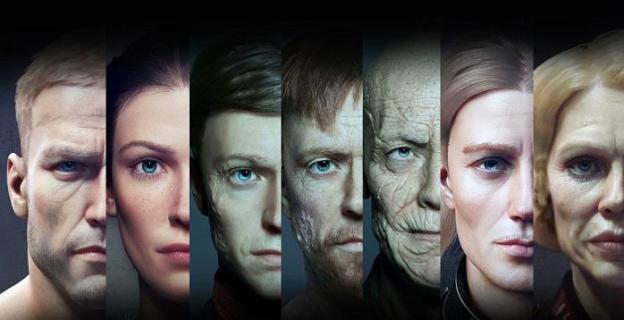
Feel free to comment and talk about the post, Wolfenstein in general, punching Nazis…anything that strikes your fancy.
LikeLike
Man, I just love it when games like this are marketed as this high action cathartic thrill-ride, but takes its time to really explore the characters and the impact the game has on it. I think the subversion of expectations coming into it is what I really liked about Wolfenstein.
LikeLike